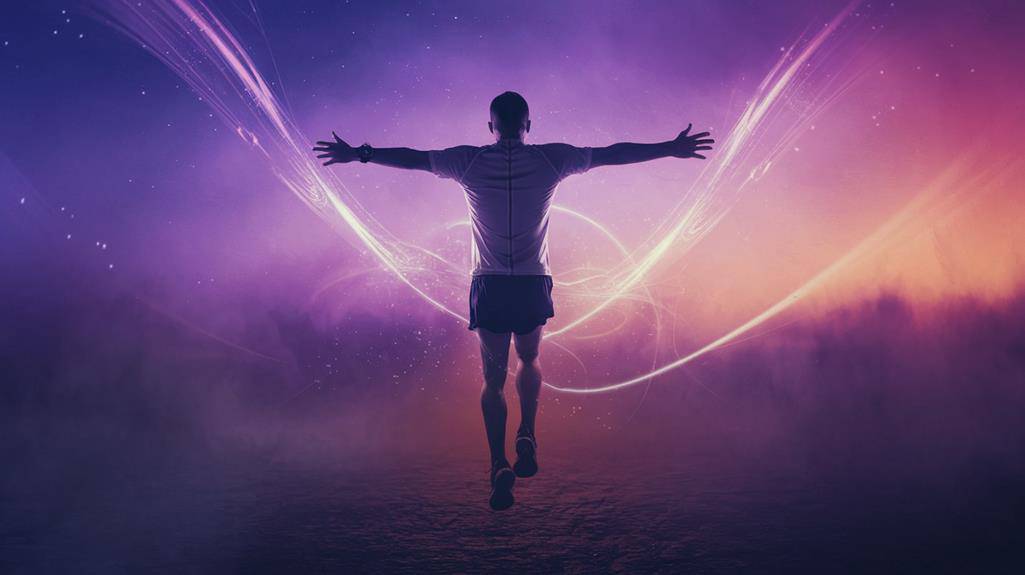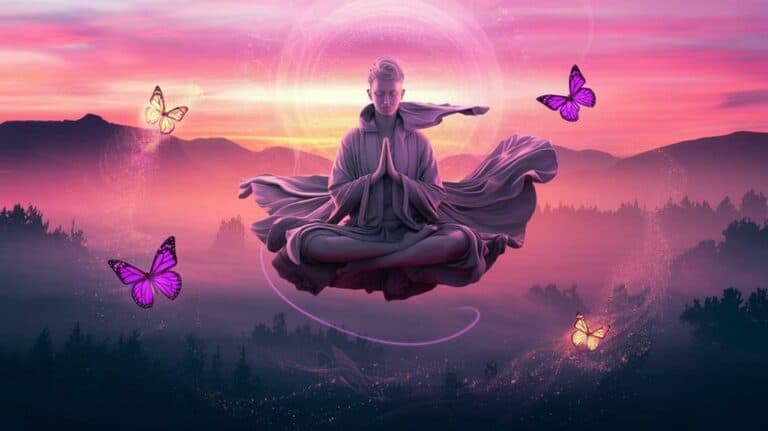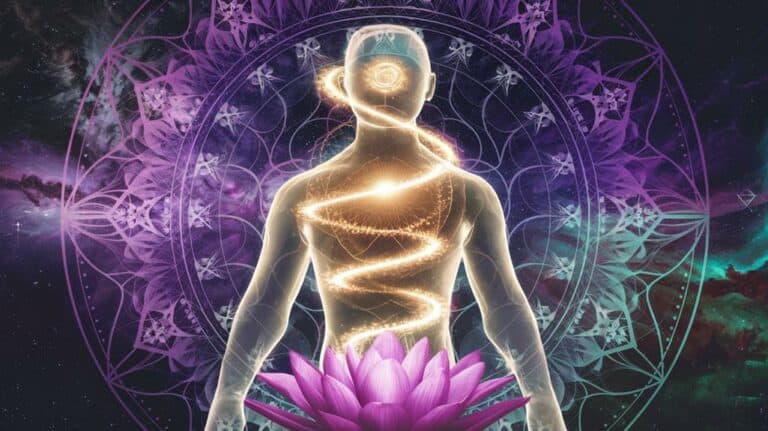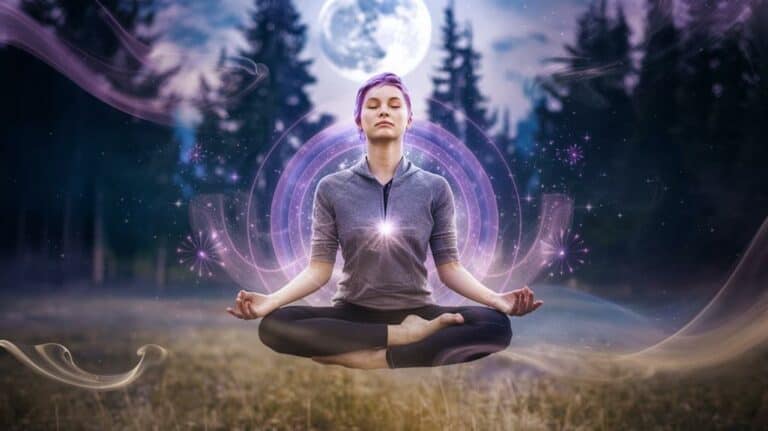Mystical Experiences in Sports and Physical Activities (E.G., Runner’s High)
You’ve probably heard athletes describe moments when everything clicked perfectly—when they felt invincible, weightless, or deeply connected to something greater than themselves. These mystical experiences in sports, from the well-documented runner’s high to the elusive “zone” that elite performers chase, aren’t just feel-good stories or placebo effects. They’re rooted in measurable changes within your brain and body, triggered by specific conditions during physical activity. While science continues to unravel the neurological mechanisms behind these transcendent states, understanding how to access them reliably could transform not only your athletic performance but also your perception of consciousness itself.
The Science Behind Runner’s High
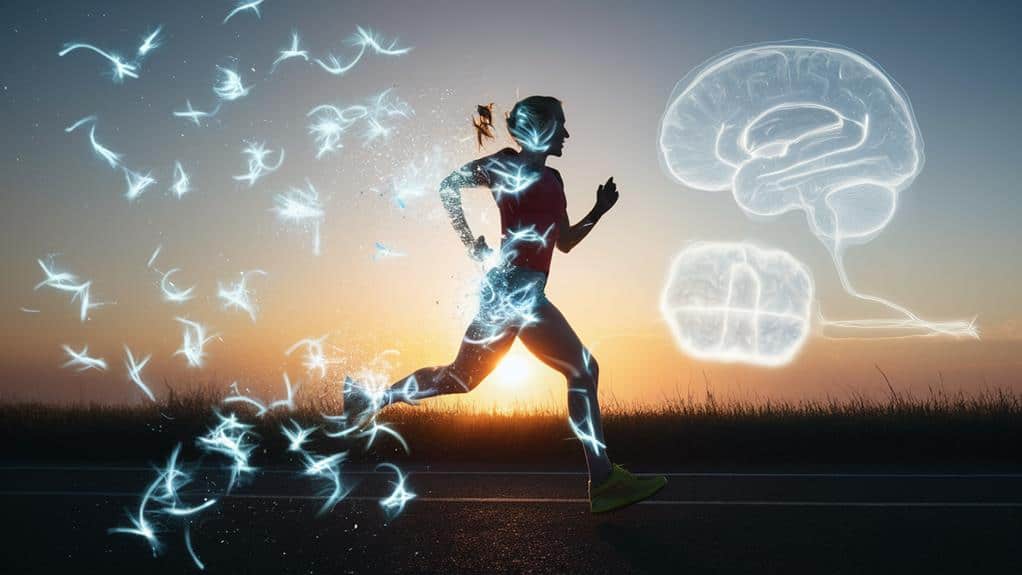
For decades, scientists have worked to unravel the biochemical mystery behind runner’s high – that euphoric state athletes experience during prolonged exercise.
You’ve likely heard it described as a profound feeling of weightlessness, where your body moves effortlessly through space and time seems to dissolve into pure sensation.
Research now reveals that this transcendent state isn’t just about endorphins, as previously believed. Your brain produces a cascade of neurochemicals, including endocannabinoids – compounds similar to those found in cannabis – which can cross the blood-brain barrier and trigger profound alterations in consciousness.
You’ll find that after about 30 minutes of sustained exercise, these molecules flood your system, reducing anxiety and dulling pain while elevating your mood to unprecedented heights.
This biochemical transformation helps explain why you might feel deeply connected to your surroundings during a long run, as if you’ve transcended the ordinary boundaries of self.
The runner’s high exemplifies your body’s remarkable capacity to generate its own mystical experiences, allowing you to access altered states of consciousness through nothing more than rhythmic movement through space.
Flow States in Athletic Performance
When athletes describe being “in the zone,” they’re actually referring to a psychological phenomenon known as a flow state – a peak mental condition where action and awareness merge into a seamless performance.
You’ll find yourself moving with effortless precision as if your body’s operating on autopilot while your conscious mind observes in serene detachment. Time seems to stretch or compress, and you’ll notice an unusual clarity in your perception of the world around you.
You can’t force yourself into flow, but you can create conditions that make it more likely to emerge. It often occurs when you’re facing a challenge that perfectly matches your skill level – not so easy that you’re bored, not so difficult that you’re overwhelmed.
During these moments, you’ll discover that your self-consciousness dissolves, and you’ll experience a profound sense of unity with your activity. Your movements become fluid and instinctive, unburdened by doubt or hesitation.
The usual mental chatter fades away, replaced by an intense focus that doesn’t require conscious effort. It’s in these transcendent moments that you’ll find yourself performing at your absolute peak, accessing capabilities that normally lie dormant in everyday consciousness.
Historical Accounts Across World Sports
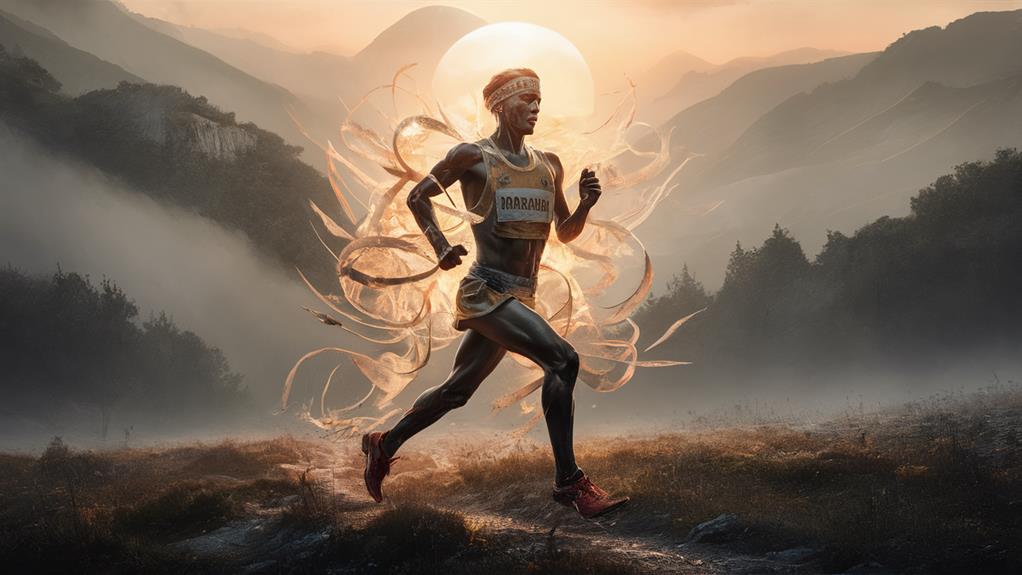
Throughout history, athletes across different cultures and sports have documented profound mystical experiences during competition.
You’ll find accounts from Zen-trained Japanese archers describing moments of complete unity with their bow and target, while Native American runners speak of spiritual communion with the land during long-distance journeys.
These testimonies span centuries and continents, revealing a universal thread in human athletic experience.
When you examine the records of ancient Greek Olympians, you’ll discover descriptions of divine states they believed were bestowed by the gods, moments when physical limitations seemed to dissolve into pure energy and purpose.
Medieval European knights reported similar transcendent experiences during tournaments, as did Chinese martial artists who documented moments of perfect harmony between body and spirit.
In more recent times, you’ll encounter accounts from mountaineers who’ve described profound shifts in consciousness at high altitudes, and marathon runners who’ve experienced what they call “touching the infinite” during grueling races.
These historical narratives share striking similarities: a dissolution of ego, a sense of timelessness, and a deep connection to something greater than themselves.
Physical Activity and Consciousness
Exercise fundamentally alters human consciousness in measurable ways. When you engage in sustained physical activity, your brain undergoes remarkable shifts in neurochemistry, leading to states of consciousness that you can’t access through ordinary means.
You’ll notice how your perception of time begins to blur, and your awareness becomes heightened yet paradoxically detached from everyday concerns.
You’ll discover that during intense physical exertion, your mind enters what scientists call “transient hypofrontality,” where your prefrontal cortex temporarily reduces its regulatory control. This state allows you to transcend your normal cognitive boundaries, opening doorways to experiences that feel both deeply personal and mysteriously universal.
As your body moves through space, you’ll find yourself tapping into ancient patterns of human movement that can trigger profound alterations in consciousness. Your breath synchronizes with your motion, creating a natural meditation that dissolves the boundary between self and action.
In these moments, you’re not just exercising your body – you’re exploring the furthest reaches of your consciousness, accessing states of awareness that have captivated athletes and spiritual seekers throughout human history.
Neurological Changes During Peak Moments
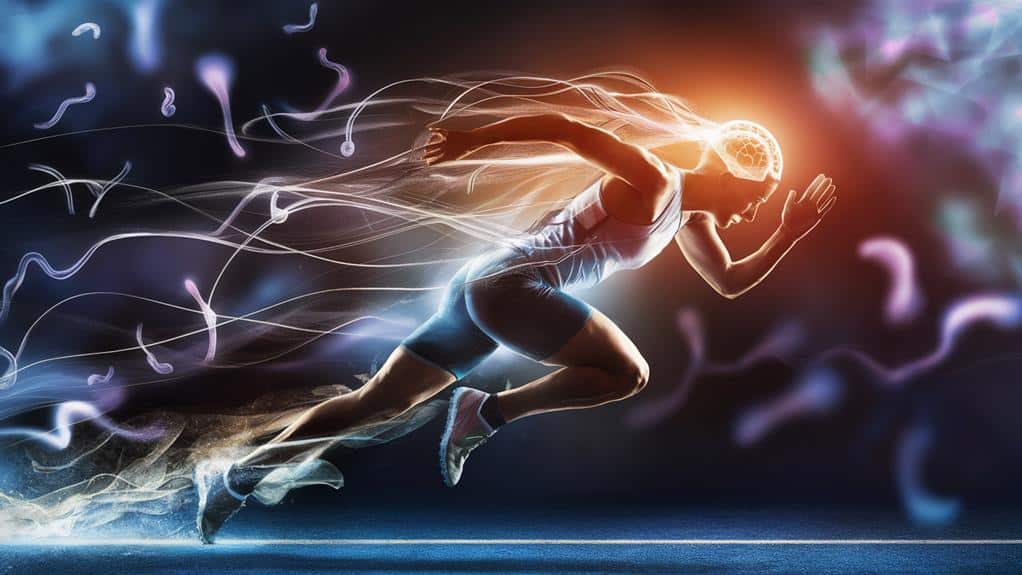
The athlete’s brain undergoes dramatic transformations during moments of peak performance. During these heightened states, you’ll experience a cascade of neurochemical changes as your brain releases endorphins, dopamine, and serotonin – nature’s own cocktail of transcendence.
Your neural pathways begin firing in synchronized patterns, creating what scientists call “flow state,” where your consciousness seems to expand beyond its normal boundaries.
You’ll notice how your prefrontal cortex, typically busy with self-doubt and internal chatter, becomes remarkably quiet. This neural quieting allows you to merge with the present moment, as your brain shifts from beta to alpha waves, creating a state of focused awareness that athletes often describe as “being in the zone.”
Your amygdala’s fear response diminishes, while your anterior cingulate cortex heightens your perception of body movement and spatial awareness.
These neurological shifts don’t just enhance your performance – they transform your very experience of reality. Your brain’s default mode network, responsible for self-referential thinking, temporarily recedes, allowing you to transcend your ordinary sense of self and connect with something larger, more profound, and ultimately transformative.
Athletic Transcendence and Spirituality
These profound neurological changes often open doorways to deeply spiritual experiences in athletics. When you’re pushing your physical limits, you’ll find yourself crossing thresholds where the boundary between self and activity dissolves, creating moments of pure consciousness that transcend ordinary awareness.
You’re no longer simply running, swimming, or cycling – you’ve become the movement itself.
In these transcendent states, you’ll discover that your athletic pursuit transforms into a form of moving meditation, where the repetitive nature of your activity creates a sacred rhythm that aligns body, mind, and spirit.
You’ll notice how time seems to bend and flow differently, and you’ll experience what athletes often describe as feeling “in the zone” – a state where you’re fully present yet paradoxically beyond your normal sense of self.
These moments aren’t just peak athletic experiences; they’re gateways to profound spiritual insights that can reshape your understanding of consciousness and existence.
Through sustained physical effort, you’re accessing altered states that mystics and contemplatives have sought through meditation and prayer for millennia, revealing the deep connection between physical movement and spiritual awakening.
Training for Mystical States
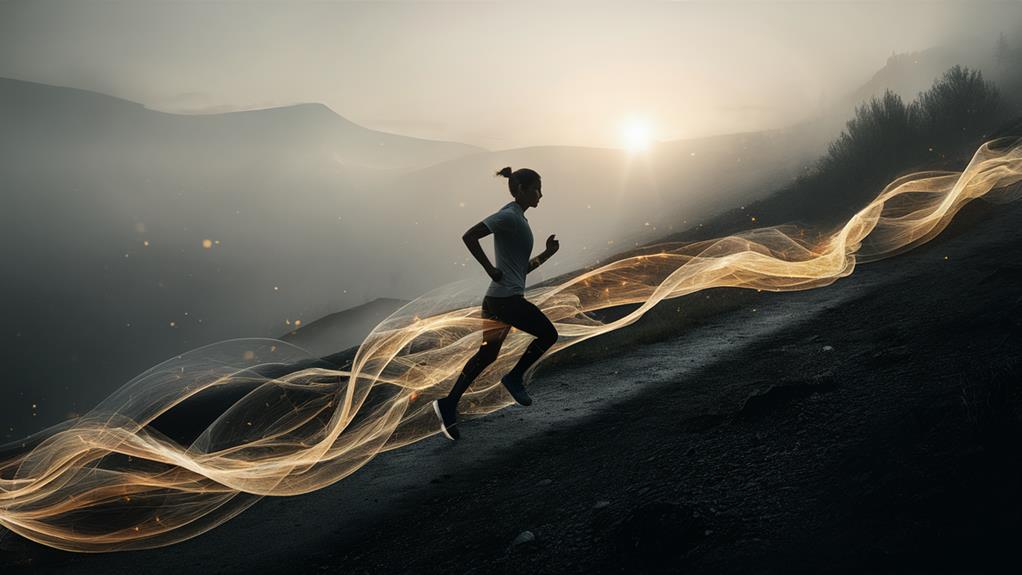
Athletes seeking mystical experiences can develop specific training approaches that make transcendent states more accessible. You’ll find that combining steady-state cardio with mindful breathing techniques creates ideal conditions for altered consciousness, particularly when you maintain a consistent rhythm for extended periods.
By gradually increasing your workout duration while staying just below your anaerobic threshold, you’re more likely to trigger the neurochemical cascade associated with transcendent states.
To deepen your practice, you’ll want to cultivate present-moment awareness during training sessions. Begin by focusing on your footfalls, breath patterns, or the subtle sensations in your muscles.
You can enhance these states by training in natural settings where the boundary between self and environment becomes permeable. As you progress, you’ll discover that certain environmental conditions – dawn workouts, solitary trails, or rhythmic movements – can serve as reliable gateways to mystical experiences.
Your training environment should minimize distractions while maximizing your connection to the activity itself. Remember that transcendent states often emerge when you’ve established a foundation of physical competence and can release conscious control of movement patterns.
Modern Research and Case Studies
Recent studies from across the globe have documented hundreds of athletes’ mystical experiences during peak performance states. You’ll find research from prestigious institutions revealing how marathon runners report dissolving into pure awareness, while elite climbers describe merging with the mountain itself.
These aren’t mere metaphors – brain imaging studies show distinct patterns of neural activity during these transcendent moments that mirror those observed in deep meditation.
When you examine the case studies, you’ll discover striking similarities in how athletes describe their experiences. A 2019 study at Stanford tracked ultrarunners who reported losing all sense of separate self during their longest runs, while research at Germany’s Max Planck Institute documented how professional surfers experienced time dilation and profound unity with the ocean.
You’ll notice these accounts consistently mention the dissolution of ego boundaries, altered time perception, and a deep sense of connection with something greater than themselves.
What’s particularly fascinating is how these experiences occur across different sports and skill levels, suggesting they’re fundamental to human consciousness rather than just by-products of physical exhaustion or heightened endorphins.



